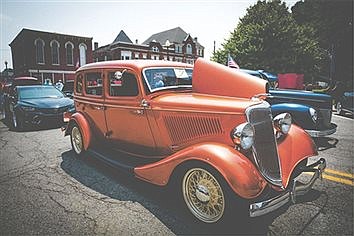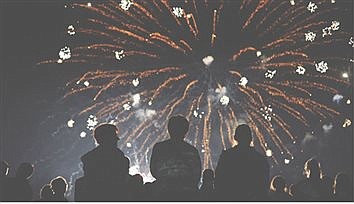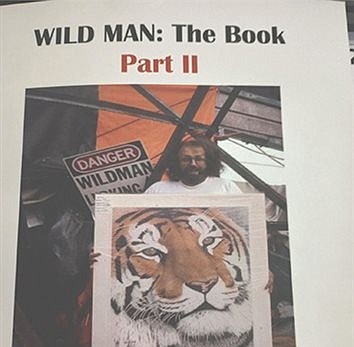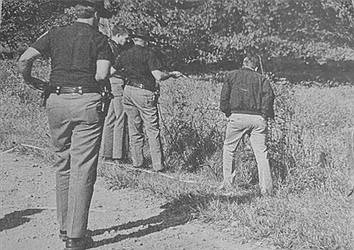The History of our Christmas Decorations
December 21, 2022 at 3:15 p.m.
'Tis the season! As you look around your home and community this week at all the beautiful holiday decorations, there is a bit of history to each that we've continued to honor, even as we create our own new traditions.
Christmas trees date back to Germany in the Middle Ages, with German and other European settlers popularizing the tradition in America by the early 19th century. A New York woodsman named Mark Carr is credited with opening the first U.S. Christmas tree lot in 1851. Here in Indiana, scotch pine and eastern white pine are the most common Christmas tree species grown.
Door wreaths have been around since the ancient Greeks and Romans, who often adorned their homes with boughs of holly. Eventually the Christmas wreath took on Christian meaning, with the circular shape representing eternal life and the holly leaves and berries symbolic of Christ's crown of thorns and blood, according to the New York Times.
Whether eaten as a treat or hung on the tree as decoration, candy canes are the No. 1-selling non-chocolate candy during December, and date back to 1600s in Germany. The red and white peppermint sticks arrived stateside in 1847, when a German-Swedish immigrant in Wooster, Ohio placed them on a tree. By the 1950s, we had candy cane-making machines to meet the mass appeal.
Christmas lights: While Thomas Edison is credited with inventing the light bulb, it was his partner and friend, Edward Hibberd Johnson, who had the idea of stringing bulbs around a Christmas tree in New York in 1882. By 1914, the lights were being mass produced and now more than 150 million sets of lights are sold in the U.S. each year.
Poinsettias may be America's Christmas flower, but these plants are native to Central America. The country's first U.S. ambassador to Mexico, botanist Joel Roberts Poinsett, brought the plant to the United States (and gave them his name) in the 1820s. Years later a California horticulturist donated hundreds of the bright red and green plants to TV shows as people were tuning into Christmas specials. According to the Los Angeles Times, the poinsettia became the best-selling potted plant in the nation by 1986.
Christmas stockings: Children are taught to hang stockings above the fireplace so that Santa will fill them, but why do we put out these long socks and hope for gifts? This tradition can be traced back to a popular legend, where a poor widower had three daughters, but no dowries for them. One night, St. Nicholas secretly hurled bags of gold into the family's home. The gifts allegedly landed in the young ladies' stockings, which had been hung over the fireplace to dry after being washed. This story of good fortune spread and soon enough children everywhere hung stockings by chimneys with care, in hopes that Saint Nicholas soon would be there.
Latest News
E-Editions
Events
'Tis the season! As you look around your home and community this week at all the beautiful holiday decorations, there is a bit of history to each that we've continued to honor, even as we create our own new traditions.
Christmas trees date back to Germany in the Middle Ages, with German and other European settlers popularizing the tradition in America by the early 19th century. A New York woodsman named Mark Carr is credited with opening the first U.S. Christmas tree lot in 1851. Here in Indiana, scotch pine and eastern white pine are the most common Christmas tree species grown.
Door wreaths have been around since the ancient Greeks and Romans, who often adorned their homes with boughs of holly. Eventually the Christmas wreath took on Christian meaning, with the circular shape representing eternal life and the holly leaves and berries symbolic of Christ's crown of thorns and blood, according to the New York Times.
Whether eaten as a treat or hung on the tree as decoration, candy canes are the No. 1-selling non-chocolate candy during December, and date back to 1600s in Germany. The red and white peppermint sticks arrived stateside in 1847, when a German-Swedish immigrant in Wooster, Ohio placed them on a tree. By the 1950s, we had candy cane-making machines to meet the mass appeal.
Christmas lights: While Thomas Edison is credited with inventing the light bulb, it was his partner and friend, Edward Hibberd Johnson, who had the idea of stringing bulbs around a Christmas tree in New York in 1882. By 1914, the lights were being mass produced and now more than 150 million sets of lights are sold in the U.S. each year.
Poinsettias may be America's Christmas flower, but these plants are native to Central America. The country's first U.S. ambassador to Mexico, botanist Joel Roberts Poinsett, brought the plant to the United States (and gave them his name) in the 1820s. Years later a California horticulturist donated hundreds of the bright red and green plants to TV shows as people were tuning into Christmas specials. According to the Los Angeles Times, the poinsettia became the best-selling potted plant in the nation by 1986.
Christmas stockings: Children are taught to hang stockings above the fireplace so that Santa will fill them, but why do we put out these long socks and hope for gifts? This tradition can be traced back to a popular legend, where a poor widower had three daughters, but no dowries for them. One night, St. Nicholas secretly hurled bags of gold into the family's home. The gifts allegedly landed in the young ladies' stockings, which had been hung over the fireplace to dry after being washed. This story of good fortune spread and soon enough children everywhere hung stockings by chimneys with care, in hopes that Saint Nicholas soon would be there.





